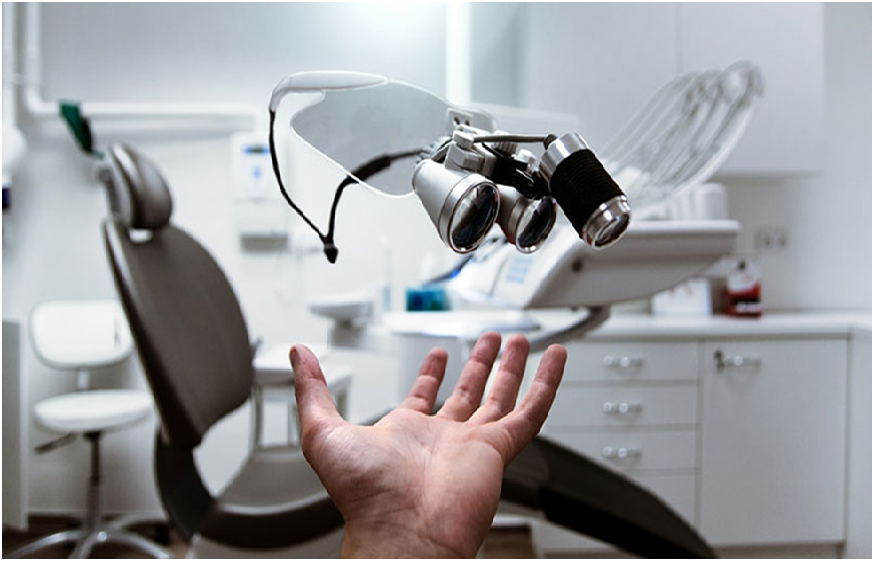Boost Eye Condition Diagnosis by Augmented Vision Company

You should know that augmented reality is a technology in which you can see the natural world around you using different locations and objects.
The primary purpose is to provide people interactive content combined with the natural world with computer-generated objects.
We decided to present you with a brief guide on using augmented reality for diagnosis and treatment.
Let us start from the beginning.
AR and Cataracts
For instance, cataracts are one of the most common problems that happen to millions of people worldwide.
At the same time, it can lead to vision loss. It causes clouding vision, but similarly, like any other condition, it is painless and gradual. Therefore, you won’t notice symptoms until they reach the late stages.
You should enter here to learn more about cataracts.
Later the symptoms include glare, blurry vision, poor vision at night, and double vision in some people. It is a condition that requires surgery, which provides for replacing lens capsule with IOL or artificial intraocular lens.
After surgery, doctors will conduct visual acuity and auto-refractometer tests to determine the success and optical performance.
However, the patient may not experience proper vision afterward. The cause may be challenging to determine, so we have multiple, confusing answers based on eye surgeons’ subjective opinions.
Today, you can find a recently developed AR-based cataract simulator that can provide additional insight into this particular condition’s effects. The simulation is an excellent method for patients between surgeries to determine the cause of issues.
Even though this particular surgery is successful in most cases, people still want to undergo non-invasive techniques.
IOL and Simulation
We can differentiate a wide array of IOLs, which is an essential consideration for surgeons and patients. However, the most common options are spherical with specific aberrations.
Both patients and doctors should know which IOL is best for use. Therefore, simulators can help both sides to understand conditions, vision, and potential treatment options.
Even though choosing the different and proper design will increase vision after the operation, selection criteria depend on clinical experience and other commercial factors.
The best way to prevent the potential issues from happening is to conduct a pre-operative simulation. By using the IOL simulator, you can determine the best course of action before surgery.
AR technology has reached a point in which doctor can conduct proper eye diagnosis afterward. Keep in mind that vision simulators are in high demand and will increase as time goes by.
Using them can help you determine the actualI OL design’s actual performance, which will help you save both resources and time. This particular approach can help you minimize refractive errors afterward and as pherical and spherical aberrations that may happen.
A simulator will also check the visual quality before finding you the best match possible. Watch this video: https://www.youtube.com/watch?v=cgVkh8p1rI0 to learn more about cataract surgery.
However, the main disadvantage of IOL simulators is their inability to determine the size and shape of the crystalline lens after the surgery. It uses a crystalline lens, the retinal image of the cornea, and creates a proper simulation.
The general problem is that after surgery, an eye professional will remove the crystalline lens, which is not something you can consider during a simulation. Therefore, the best and most accurate way to measure corneal and ocular aberrations is by using corneal topography.
AR Preoperative Simulation
Checking for a refractive error in your eyes is an indispensable diagnostic method that will help you determine your visual acuity.
You can use a wide array of instruments and tools, including a phoropter, which will place different lenses and allow the patient to look at an eye chart.
However, the process is time-consuming and unreliable because people tend to memorize different options select them accordingly.
According to a recent study, used with holographic optical elements, the process found ways to deal with this particular problem and create an accurate measurement and diagnosis.
Visit the Heru, Inc. official website to learn more about the latest technological advancements in eye issue diagnosis.
The best thing about the holographic optical element is its ability to operate in various and specific wavelengths. Therefore, it will present a patient’s ability to project images based on wavelength, blocking the view and offering a regular and accurate indication.
Besides, AR is something you can implement into contact lenses for surgical simulation and training. You can find a wide array of lens displays that feature AR technology, which will provide a patient with a fast-computing display and high resolution.




